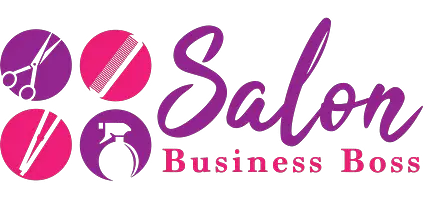The salon industry, encompassing hair, beauty, and wellness services, has witnessed steady growth over the years. Salon owners and entrepreneurs continually strive to optimize their business models and increase profitability. One critical metric that reflects a salon’s financial health is its profit margin, which indicates the percentage of revenue retained as profit after deducting all costs and expenses.
Profit margin in the salon business is around 8.2%. Achieving this requires savvy pricing, operational efficiency, exceptional customer experiences, and embracing industry trends. Balancing costs and quality is crucial for sustained success in this competitive market.
Industry Overview

The salon business operates within a dynamic and highly competitive market, characterized by a wide array of services catering to a diverse clientele. From classic haircuts and trendy styling to luxurious spa treatments and rejuvenating skincare services, salons offer a plethora of options to meet the varying needs of their customers.
Salon owners and entrepreneurs face numerous challenges in this ever-evolving industry, with profitability being a primary concern. The bottom line of a salon’s financial health is influenced by a multitude of factors. Operating costs, staff wages, product expenses, rent, and marketing efforts are just a few examples of the variables that impact profit margins.
Moreover, the profit margins in the salon business can fluctuate significantly depending on various factors. The geographical location of a salon plays a crucial role, with salons in densely populated urban areas facing higher expenses but potentially benefiting from a larger customer base. Specialization can also influence profit margins, as salons that focus on niche services may have the opportunity to charge premium prices and enjoy a dedicated clientele.
The level of competition in a particular area can directly impact a salon’s profitability. In highly saturated markets, salons must employ effective marketing strategies, exceptional customer service, and unique offerings to stand out and maintain healthy profit margins.
The salon industry is a multifaceted landscape where businesses must continuously adapt to the changing demands and preferences of customers. By effectively managing costs, providing outstanding services, and staying attuned to market trends, salon owners can navigate the challenges and achieve sustainable profit margins in this dynamic and vibrant market.
Read more about: How to Write Your Salon Business Plan
Understanding Profit Margin
Profit margin stands as one of the most crucial financial indicators for evaluating a company’s overall profitability in relation to its revenue. It provides valuable insights into how efficiently a business is generating profits from its operations. The formula to calculate profit margin is simple yet insightful: it is obtained by dividing the net profit (the amount left after subtracting all expenses from the total revenue) by the total revenue and then expressing the result as a percentage.
In the context of the salon business, a profit margin of approximately 8.2% implies that for every dollar earned in revenue, approximately 8.2 cents contribute to the business’s profit. This means that after accounting for all operating costs, such as employee wages, rent, inventory, utilities, and marketing expenses, the salon retains about 8.2% of its revenue as profit.
A profit margin of 8.2% can be considered healthy within the salon industry, but it is essential to assess it in the context of market norms and business objectives. For some salons, achieving a higher profit margin may be a priority, while others may focus on other metrics like customer satisfaction and growth.
Monitoring profit margin regularly helps salon owners make informed decisions about pricing strategies, cost-cutting measures, and overall financial performance. By striving to maintain a sustainable profit margin, salons can ensure their long-term success and stability in this dynamic and competitive industry.
Factors Influencing Profit Margins in the Salon Business
1. Pricing Strategies:
Determining the right pricing strategy is a critical aspect of success for salon owners. It requires striking a delicate balance between attracting customers and maintaining healthy profit margins. Setting prices too low may indeed lure in clients, but it can ultimately lead to reduced profitability as the salon struggles to cover operational expenses. Conversely, exorbitant prices can scare away potential clients and result in lost business opportunities.
To establish an ideal pricing strategy, salon owners must consider various factors. The location of the salon plays a significant role; salons in upscale neighborhoods may command higher prices, while those in more modest areas may need to adopt a more budget-friendly approach. The target market is equally important; understanding the preferences and spending habits of the salon’s clientele allows for more tailored pricing decisions.
Service quality also influences pricing. High-quality services often justify premium prices, as customers are willing to pay for exceptional experiences. However, pricing should align with the level of competition in the area to remain competitive.
Salon owners can employ creative strategies to positively impact profit margins. Offering bundled services can entice customers with enticing package deals, encouraging them to spend more in a single visit. Loyalty programs reward repeat customers, incentivizing their continued patronage. Seasonal promotions capitalize on festive occasions or special events to boost customer traffic and revenue.
2. Operational Efficiency:
Operational efficiency is a key determinant of a salon’s financial health. Efficient resource management translates to lower costs, higher productivity, and improved profit margins. Staff scheduling optimization is crucial to ensure the right number of employees are on duty during peak hours, reducing idle labor costs. Furthermore, it prevents understaffing, which could negatively impact customer service.
Effective inventory management is equally vital. Avoiding overstocking products reduces storage costs and minimizes the risk of product expiration or obsolescence. Maintaining the right stock levels ensures products are available when needed, streamlining operations and customer satisfaction.
Investing in modern salon management software streamlines various aspects of the business, from appointment booking and customer tracking to inventory management and financial reporting. Such technology enhances efficiency, saving time and resources while improving accuracy.
Sustainable practices are gaining momentum in the salon industry, and their implementation can lead to cost reductions. Adopting eco-friendly practices, such as using energy-efficient lighting and water-saving fixtures, helps lower utility expenses while aligning the business with environmentally conscious customers.
3. Staff Compensation and Training:
The success of a salon heavily relies on the expertise and skills of its staff. Hiring and retaining talented professionals may entail higher compensation, but it ultimately contributes to improved service quality and customer satisfaction. Satisfied customers are more likely to become loyal patrons, resulting in higher customer retention rates and increased revenues.
Investing in staff training and upskilling initiatives is equally vital. Regular training sessions keep the staff updated on the latest trends, techniques, and product knowledge, enabling them to offer cutting-edge services to clients. A well-trained team instills confidence in customers, enhancing the salon’s reputation as a go-to destination for quality services.
Staff training can lead to a competitive advantage within the market. Salons with highly skilled and knowledgeable staff are more likely to attract discerning customers seeking superior service, allowing the business to justify premium pricing and potentially boost profit margins.
4. Customer Retention and Experience:

Customer retention is a cornerstone of salon profitability. Acquiring new customers is typically costlier than retaining existing ones, making it crucial for salons to focus on building strong customer relationships. An exceptional salon experience leaves a lasting impression on clients, making them more likely to return for future services.
Personalized services cater to individual preferences and needs, making customers feel valued and understood. Listening to customer feedback and actively seeking it provides insights into areas of improvement, allowing the salon to refine its services and enhance customer satisfaction.
Word-of-mouth referrals are powerful marketing tools. Satisfied customers often share their positive experiences with friends and family, attracting new business without additional marketing expenses. Creating a positive and memorable salon experience, therefore, has a direct impact on both customer retention and acquisition.
Read more about: Commission-Based Salon Ownership: Steps and Practices
5. Cost Management:
Effective cost management is instrumental in maintaining a healthy profit margin. Analyzing all expenses, from rent and utilities to product costs and marketing efforts, helps identify areas where cost reductions are feasible without compromising service quality.
Negotiating with suppliers for better rates can lead to significant savings. Building strong relationships with suppliers and consolidating purchases can provide leverage in obtaining discounts or favorable terms.
Implementing energy-saving measures, such as LED lighting and energy-efficient appliances, can lower utility expenses over time. Streamlining inventory management and reducing waste prevent unnecessary expenses and ensure resources are used efficiently.
Industry Trends Affecting Profit Margins
1. Shift Towards Sustainable Practices:
As global environmental awareness continues to rise, consumers are increasingly seeking businesses that demonstrate a commitment to sustainable practices, including the salon industry. Salons that adopt eco-friendly initiatives can attract environmentally conscious customers, establishing a reputation as responsible and socially conscious businesses. By implementing sustainable practices, such as using organic and cruelty-free products, recycling, and minimizing plastic waste, salons not only align themselves with customer values but also contribute to environmental preservation.
Embracing sustainable practices can lead to cost savings, positively affecting profit margins. Reducing waste and optimizing resource usage can result in lower operating costs, while implementing energy-efficient technologies and water-saving measures can lead to decreased utility bills over time. Moreover, consumers are often willing to pay a premium for eco-friendly services, allowing salons to justify slightly higher prices and potentially boost profitability.
2. Rise of Specialized Services:
In the competitive salon industry, offering specialized services can be a strategic way to stand out and attract a dedicated clientele. By focusing on specific niches, such as organic skincare, men’s grooming, or curly hair styling, salons can create a unique selling proposition that sets them apart from generic competitors. This differentiation not only enhances brand visibility but also allows salons to position themselves as experts in their chosen area.
Specialization often leads to higher profit margins, as salons can charge premium prices for their specialized services. Loyal clients seeking unique expertise are often willing to pay more for the value they receive. Moreover, marketing efforts can be more targeted and cost-effective when focusing on a specific target audience, reducing the need for extensive and broad advertising campaigns.
3. Integration of Technology:
In the digital age, embracing technology is crucial for staying competitive and driving business growth. Salons that integrate technology-driven solutions can streamline their operations and enhance the customer experience. Online booking systems provide convenience and flexibility for customers, reducing administrative workload for staff. CRM software enables better customer relationship management, allowing salons to tailor services and offers to individual preferences.
Social media marketing opens up new avenues for reaching potential customers and engaging with the existing client base. By creating captivating content and promoting special offers, salons can attract tech-savvy customers and encourage repeat business. Leveraging technology not only enhances efficiency but can also lead to increased revenues, ultimately contributing to improved profit margins.
Conclusion
Achieving a profit margin of around 8.2% in the salon business demands a strategic approach that encompasses various elements. From effective pricing strategies and operational efficiency to staff training and exceptional customer experiences, each factor plays a vital role in shaping the financial performance of a salon. Staying abreast of industry trends and embracing technological advancements can further bolster profit margins and secure the long-term success of a salon in the competitive market. By focusing on these key attributes and continuously adapting to evolving consumer preferences, salon owners can thrive and flourish in the ever-evolving beauty and wellness industry.
Frequently Asked Questions

1. Should I regularly review and adjust my pricing strategy?
Yes, regularly reviewing and adjusting pricing strategies based on market trends, costs, and customer feedback is essential to maintain competitiveness and optimize profit margins.
2. How do industry trends affect profit margins in the salon business?
Adopting industry trends like new services, technology, and marketing techniques can keep your salon relevant and attractive to customers, potentially boosting profit margins.
3. What financial benchmarks should I monitor to gauge profit margin health?
Monitor key financial ratios, including gross profit margin, net profit margin, and return on investment (ROI), to assess your salon’s overall financial health and profitability.
To learn more on how to start you own salon checkout my startup documents here.
Please note that the contents of this blog are for informational and entertainment purposes only and should not be construed as legal advice. Any action taken based on the information provided in this blog is solely at your own risk. Additionally, all images used in this blog are generated under the CC0 license of Creative Commons, which means they are free to use for any purpose without attribution.

About the author. Entrepreneur and Salon Business Fan.
Hi! I am Shawn and I am a happy individual who happens to be an entrepreneur. I have owned several types of businesses in my life from a coffee shop to an import and export business to an online review business plus a few more and now I create online salon business resources for those interested in starting new ventures. It’s demanding work but I love it. I do it for those passionate about their business and their goals. That’s why when I meet a salon business owner, I see myself. I know how hard the struggle is to retain clients, find good employees and keep the business growing all while trying to stay competitive.
That’s why I created Salon Business Boss: I want to help salon business owners like you build a thriving business that brings you endless joy and supports your ideal lifestyle.

